Sumanshreeti6258
On this page, you find all documents, package deals, and flashcards offered by seller sumanshreeti6258.
- 12
- 0
- 0
Community
- Followers
- Following
12 items

Primary Decomposition Theorem
Includes: Statement and proof of Primary Decomposition Theorem Primary decomposition theorem from associated prime. It uses minimal polynomial of a matrix to write a vector space as a direct sum of invariant subspaces.
- Class notes
- • 5 pages •
Includes: Statement and proof of Primary Decomposition Theorem Primary decomposition theorem from associated prime. It uses minimal polynomial of a matrix to write a vector space as a direct sum of invariant subspaces.

Orbit- Stabilizer Theorem
Includes: statement and proof of Orbit-Stabilizer Theorem. Orbit-Stabilizer Theorem is a combinatorial result in group theory. This theorem is often used in conjunction with Lagrange's theorem.
- Class notes
- • 2 pages •
Includes: statement and proof of Orbit-Stabilizer Theorem. Orbit-Stabilizer Theorem is a combinatorial result in group theory. This theorem is often used in conjunction with Lagrange's theorem.
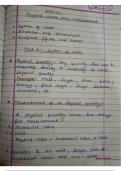
System of units: part A
Includes: 1. Physical units 2. Measurement of a physical quantity 3. Definitions of mass, length, time. 4. Fundamental units and its types 5. System of units and its types 6. Basic physical quantity 7. Supplementary physical quantity 8. Abbreviation in power of 10 9. Derived units 10. Plane angle 11. Definition of 1 Radian 12. Bigger units of length 13. Relation between astronomical unit and light year 14. Solid angle
- Interview
- • 11 pages •
-
• Physics
Includes: 1. Physical units 2. Measurement of a physical quantity 3. Definitions of mass, length, time. 4. Fundamental units and its types 5. System of units and its types 6. Basic physical quantity 7. Supplementary physical quantity 8. Abbreviation in power of 10 9. Derived units 10. Plane angle 11. Definition of 1 Radian 12. Bigger units of length 13. Relation between astronomical unit and light year 14. Solid angle
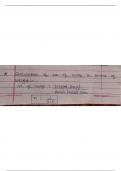
Basic concepts of chemistry
Includes: 1. Calculation of no. of moles in terms of weight. 2. Solved questions. 3. Questions on calculation of no. of electrons in compounds 4. Calculation of no. of moles of gas in terms of volume at S.T.P
- Interview
- • 10 pages •
Includes: 1. Calculation of no. of moles in terms of weight. 2. Solved questions. 3. Questions on calculation of no. of electrons in compounds 4. Calculation of no. of moles of gas in terms of volume at S.T.P
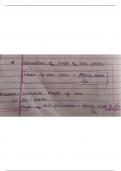
Basic concepts of Chemistry
Includes: 1. Calculation of mass of one atom with solved examples. 2. Calculation of mass of one molecules with solved examples. 3. Definition of mole concepts. 4. How to find no. of moles. 5. How to find no. of particles containing electrons. 6. Solved questions.
- Interview
- • 8 pages •
Includes: 1. Calculation of mass of one atom with solved examples. 2. Calculation of mass of one molecules with solved examples. 3. Definition of mole concepts. 4. How to find no. of moles. 5. How to find no. of particles containing electrons. 6. Solved questions.
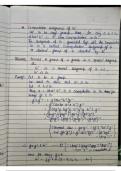
Commutator of a group
Provides information about: 1. Definition of commutator of a group G 2. Proof of the theorem Derived group of a group is a normal subgroup. 3. G/G' is abelian. 4. Other related theorem
- Class notes
- • 3 pages •
Provides information about: 1. Definition of commutator of a group G 2. Proof of the theorem Derived group of a group is a normal subgroup. 3. G/G' is abelian. 4. Other related theorem

Jordan Holder Theorem
Includes statement and proof of Jordan Holder Theorem. The Jordan- Holder theorem is about composition series of finite groups. The composition quotient groups belonging to two composition series of a finite group.
- Class notes
- • 5 pages •
Includes statement and proof of Jordan Holder Theorem. The Jordan- Holder theorem is about composition series of finite groups. The composition quotient groups belonging to two composition series of a finite group.
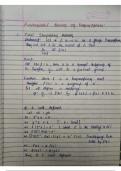
Fundamental theorem on homomorphism
Provides information about: 1. Statement and proof of first isomorphism theorem. 2.Statement and proof of second isomorphism theorem. 3. Statement and proof of third isomorphism theorem. The fundamental theorem on homomorphism relates the structure of two objects between which homomorphism is given, and of the kernel and image of the homomorphism.
- Class notes
- • 6 pages •
Provides information about: 1. Statement and proof of first isomorphism theorem. 2.Statement and proof of second isomorphism theorem. 3. Statement and proof of third isomorphism theorem. The fundamental theorem on homomorphism relates the structure of two objects between which homomorphism is given, and of the kernel and image of the homomorphism.
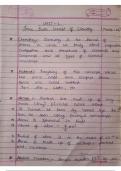
chapter 1 (Basic concepts of chemistry)
Includes: 1. Definition of matters, atoms, atomic number. 2. Calculation of number of electrons of the compounds. 3. Definition of atomic mass unit, atomic mass, molecular mass or molar mass. 4. Examples of molar mass. 5. % composition of an element in a compound with soled examples.
- Interview
- • 8 pages •
Includes: 1. Definition of matters, atoms, atomic number. 2. Calculation of number of electrons of the compounds. 3. Definition of atomic mass unit, atomic mass, molecular mass or molar mass. 4. Examples of molar mass. 5. % composition of an element in a compound with soled examples.
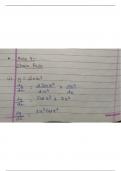
Chain rule of Differentiation
Includes: 1. Chain rule's concepts 2. Solved examples
- Interview
- • 6 pages •
Includes: 1. Chain rule's concepts 2. Solved examples
